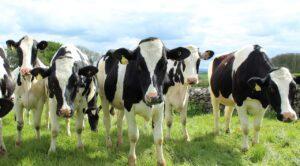Last week I started writing about resilience and how learning helps systems and individuals strengthen their resilience. We carry a lot of unexamined assumptions about how to lead organizations. Sometimes these assumptions actually make our systems less resilient, and more fragile. We can learn more about resilience by examining these assumptions, and how we think about them. How do we do that?
Here are a few examples of how assumptions and types of standard thinking can become sources of fragility for our organizations, plus an unusual lesson on resilience from the friendly cow.
Lean, mean staffing makes us more fragile
There is an unexamined assumption that creating lean and mean staffing in our organizations is good. I think this stems from another assumption that if we keep costs to a minimum, the organization will show more profit at the end of the period. However, redundancy is an essential component of resilient systems. Lean and mean staffing structures tend to reduce our organization’s redundancy of knowledge and skills. Like a single food chain in nature, if a person leaves or retires, they take their knowledge and skills with them. If no other individuals hold that knowledge, the organization is left with a gap they need to fill quickly.
This is exasperating when the organization’s work is complex, and the knowledge and skills take time to accumulate. As a result of the loss of talent, the organization’s effectiveness is diminished for a period of time. If the organization doesn’t learn that being lean is actually making them more fragile, then the leaders tend to continue the staffing pattern without change, even if they experience the problem with a loss of talent, knowledge, and skill directly. We need to ask where we need to add redundancy in our organization. We should ask that question in our personal lives, also!
What happens when efficiency is the primary goal
Organizations often hold up efficiency as a kind of business Holy Grail. If organizations are efficient, then they must be effective. But today, when there are continuing disruptions in business models due to new technologies, or shifts in funding streams, or turbulent markets, innovative thinking is essential. Remember the cow and how it produces milk. The farmer lets the cows out to pasture to graze in the grass and chew their cud. It is this process when they are hooked up to the milking machines that allow them to produce milk.
Some efficiency experts might say that the cows would be more efficient if we just hooked them up to the milking machines 24/7. These efficiency experts are missing how the creative process of producing milk requires time grazing in the field. A sole focus on efficiency actually makes organizations (and people) more fragile. (Read more about the power of hitting pause.)
Fragility comes from having no space to wonder, think, relax, or even waste time. Like the cow, we personally need to have space in our lives where nothing is happening. I lived through the time management craze in the ’80s and ’90s. The philosophy was that we waste too much time and therefore aren’t efficient. At that time, there were special calendars (still in use today) that focused our time in endless 15-minute segments and reinforced the definition of professionalism as eliminating wasted time in our day.
Unexamined organizational assumptions need to be seen and understood
Redundancy, biodiversity, and effectiveness equal resilience – NOT efficiency or lean and mean staffing. We need to notice how our deep background assumptions on how to lead an organization (or our lives) can actually hinder what we aspire to and make us more fragile.
Resilience is defined as the ability to absorb disruption and still maintain function. How can we as individuals nurture ourselves, so we have a well-spring of inner strength to help us get through the crazy times of our life? We can’t do that if we drive ourselves to be highly efficient every single day, without any time to breathe (or graze, if you’re a cow). We also need redundancy in the sources of support we need for living. We don’t need to carry a badge of “I did it all by myself.” That kind of thinking is the personal version of a lean and mean organization. We ALL need to have any personal redundancy, which is essential for a resilient system, organizationally and individually.







I like the resilient definition
Nature meant the cow’s milk for her baby. Time for we humans to switch to healthy plant based milk, lest the cows have the last laugh.
Ash ( Ashok B. Varma M.D., Fairfield, California).
So happy to see this subject getting some attention. Thank you!
Thank you for this post – timely and helpful for mindfulness.